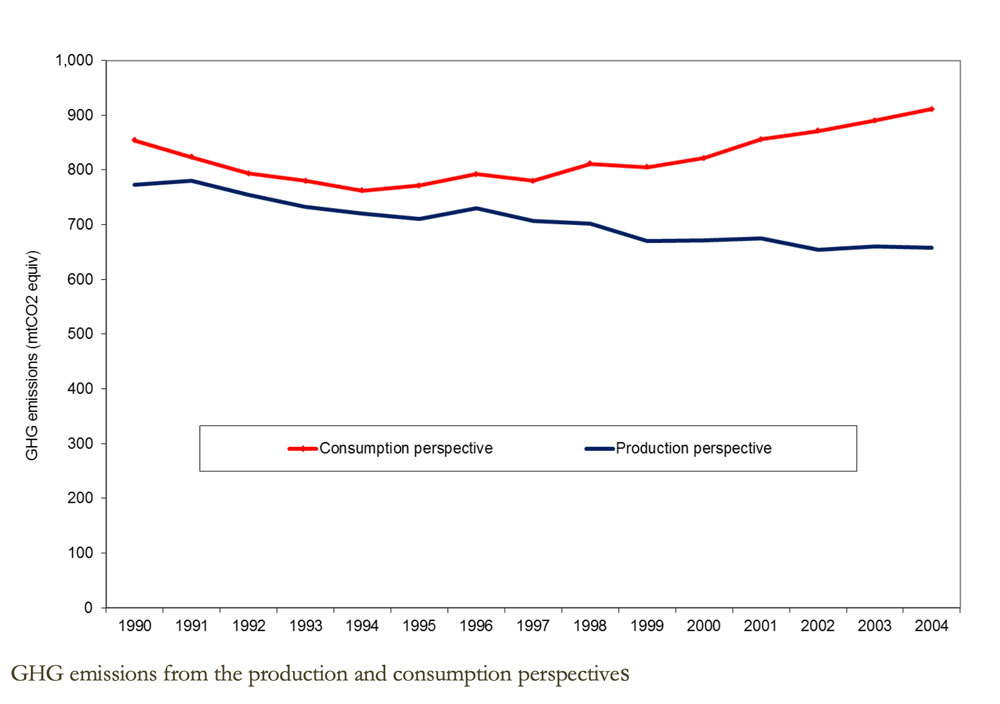Is the UK making meaningful progress towards its GHG emissions targets?
Overall aims
To assess UK progress in greenhouse gas emissions reduction using a consumption-based perspective, which accounts for all of the emissions attributable to the consumption activities of the nation, and to compare results from this approach with measurement of progress based on a production perspective.
Context
The UK’s Climate Change Act has set a legally binding target for the UK to reduce greenhouse gas (GHG) emissions by at least 80% below 1990 levels by 2050. This target applies to UK emissions on a territorial production basis, and includes all emissions that occur in the UK regardless of the destination of final goods and services in the production of which they arise. Accounting for emissions in this way is known as accounting from the ‘production perspective’, and is the perspective that is used in assessing emissions for the purposes of the Kyoto Treaty.
The difficulty with this approach is that it tends to mask the problem of ‘burden shifting’ – in which energy intensive industries are ‘exported’ to other (often less developed) countries while consumption of final products continues to rise by relying increasingly on the import of finished or semi-finished products.
To overcome this difficulty, it has been widely argued that the correct approach to measuring progress in reducing greenhouse gas emissions is to use a consumption-based perspective, which accounts for all of the emissions attributable to the consumption activities of the nation. In the consumption perspective exports are excluded and imports are included. In this way, the upstream resources associated with both domestic and imported goods are allocated to final consumption in the nation being measured.

Method
In this study we used the Surrey Environmental Lifestyle MApping (SELMA) framework. This framework estimates UK carbon emissions using the consumption perspective. Using this perspective, upstream carbon emissions that arise in the production and distribution of goods and services are attributed to the households who eventually purchase them. An important aspect of this perspective is that it takes into account all emissions incurred in support of consumption within the UK, whether the emissions occur in the UK or abroad.
Results
Using the SELMA framework we have shown that whereas GHG emissions from the conventional production perspective decreased by 9% between 1990 and 2004 they increased by 7% when measured according to the consumption perspective. Worryingly, the rate of increase in emissions from the consumption perspective was around 3% p.a. between 2000-2004. This indicates that the UK has increasingly been “off-shoring” its GHG intensive industries.
Outputs
Druckman, A, P Bradley, E Papathanasopoulou and T Jackson 2008. Measuring progress towards carbon reduction in the UK. Ecological Economics 66(4): 594-604.
Druckman, A and T Jackson 2008. The Surrey Environmental Lifestyle MApping (SELMA) framework: development and key results to date. RESOLVE Working Paper Series 08-08. Guildford: University of Surrey.
Druckman, A and T Jackson 2009. Mapping our carbon responsibilities: more key results from the Surrey Environmental Lifestyle MApping Framework (SELMA). RESOLVE Working Paper Series 02-09. Guildford: University of Surrey.





